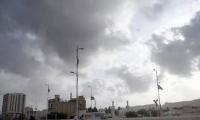Pakistan is blessed with an energetic young population which can lead the country to transformative change. However, beneath the veneer of dynamism, the challenges etched into the narrative of the nation’s youth transcend mere stumbling blocks.
The journey towards prosperity for over 60 per cent of Pakistan’s population under 30 ismarked by deficiencies in the education sector, the growing concern of rising unemployment, and lack of initiatives taken towards addressing young people’s mental health challenges. As we delve into these labyrinthine challenges, we have to call for a comprehensive, collaborative plan to unlock the latent potential residing within Pakistan’s visionary young people.
Societal evolution stands on education and skill development. Unfortunately, for many young people in Pakistan, access to education is a challenge. A Unesco report placed the country’s literacy rate at 59.1 per cent, exposing a disconcerting void. This abyss deepens further with a gender gap echoing societal disparities.
The lamentable state of education is accentuated by outdated teaching techniques, an antiquated curriculum, and an infrastructure so woefully inadequate that it becomes an anchor, not a vessel, for intellectual growth, hindering the emergence of a skilled workforce indispensable for national progress.
In the grand theatre of educational reform, the Pakistani government’s much-touted Single National Curriculum project had significant shortcomings. The government seems to be leaning more towards standardizing private-sector education than uplifting the standard of public-sector schools. This paradoxical dichotomy, instead of fostering educational excellence, sows seeds of scepticism regarding the efficacy of governmental interventions in the educational sphere.
The symbiotic dance between education and employment is disrupted by the spectre of unemployment. The Pakistan Bureau of Statistics unveils a disconcerting 8.5 per cent unemployment rate among those aged 15-27. Many youthful minds, ensnared in the abyss of underemployment, embark on a precarious descent into uncharted territories, a rhapsody of thwarted dreams, fuelled by frustration and disillusionment.
Yet, in the labyrinth of societal expectations, the hopeless journey through education and employment takes a toll on the mental health of the youth. A study by the Pakistan Journal of Medical Sciences paints a poignant reality: 39 per cent of university students in Pakistan are dealing with anxiety and depression. The lack of accessible mental healthcare services and the enduring stigma surrounding mental health compound this silent siege, leaving the emotional wellbeing of the youth perched precariously on the precipice of vulnerability.
The main problem that most Pakistani young people are going through is high levels of frustration, a malevolent force that consumes them slowly. The lack of jobs, entertainment options and health resources fosters an environment where frustration grows.
Education, the most potent weapon of young people, stands beleaguered in the face of adversity. The absence of a unified education system transforms universities and colleges into mere degree-awarding factories, diverting the trajectory from true education to a mere pursuit of degrees.
Unemployment ensnares youth in a vicious cycle of radical politics, criminal activities, and drug use. Poverty exacerbates their inability to access quality education, thus rendering them incapable of fully leveraging their talents for the nation’s benefit.
In the grim clutches of poverty and unemployment, some parents prefer sending their children into the labour force rather than to school, perpetuating the vicious cycle of child labour, a deluge that drains away precious talent, leading the young ones into the mire of bad company and immoral activities.
The growing use of narcotics among the youth, an attempt to combat their myriad miseries, becomes a major societal dilemma. An oblivious pursuit of this cheap source of solace blinds them to the fact that it squanders their priceless capabilities and propels them perilously close to the brink of self-destruction.
Tragically, some young people, unable to bear a life of constant disappointment, succumb to the ultimate act of desperation – suicide. Societal pressures and a rigid system cast an ominous shadow over the youth. Social taboos, restrictions, and a lack of autonomy in decision-making deter them from freely pursuing their dreams, leading them to evade their responsibilities towards their families and community.
The role of media, a potential beacon for guiding and uplifting the youth, remains minimal. Unattractive and non-entertaining TV programmes fail to engage the youth, who instead turn to South Asian and Western channels for inspiration and entertainment. This cultural invasion has rendered the youth’s role in promoting their own country dismal, contributing to a sense of disconnection and disenchantment.
Yet, within this plethora of challenges, there is still an opportunity for the government to embark on pragmatic initiatives. The government must stop viewing this young demographic as a burden and recognize it as an invaluable asset. It is imperative to recognize that the destiny of nations rests in the hands of the youth.
Pakistan’s youth is a tapestry woven with threads of resilience, determination, and the indomitable spirit to surmount adversities. As the nation stands at the crossroads of progress, it becomes essential to work towards uniting the forces of government, private sector, and civil society; this is not just advisable but an existential necessity.
The journey may be arduous, but within the crucible of challenges lies the promise of a stronger, more prosperous, and inclusive nation, a masterpiece sculpted by the hands of its resilient and visionary youth.
The writer is a law student.
Most recently, US presidential elections demonstrated how AI has amplified partisan split
Few years ago, Pakistan ranked as fourth-largest freelancer market globally, with potential to become number one
Arts Council Karachi celebrated its 70th birth anniversary at inaugural session with big cake
There are over 11 million Pakistanis settled abroad, out of which around six million work in Gulf and Middle East
This year alone, US Treasury would have to roll-over $10 to $14 trillion in maturing short-term debt
Tear gas no longer marks just protest sites; it paints entire cities as battlegrounds but then again, PTI did it first







